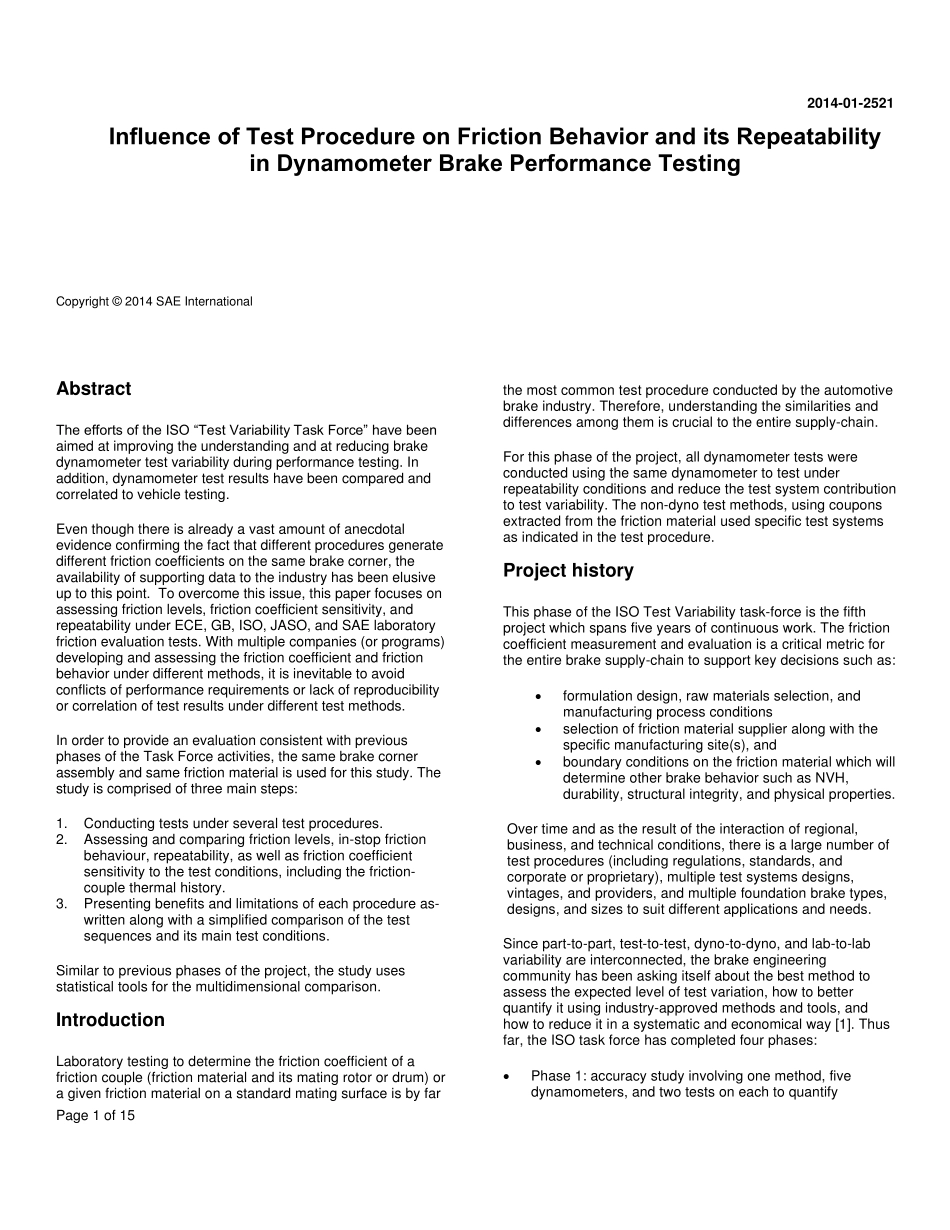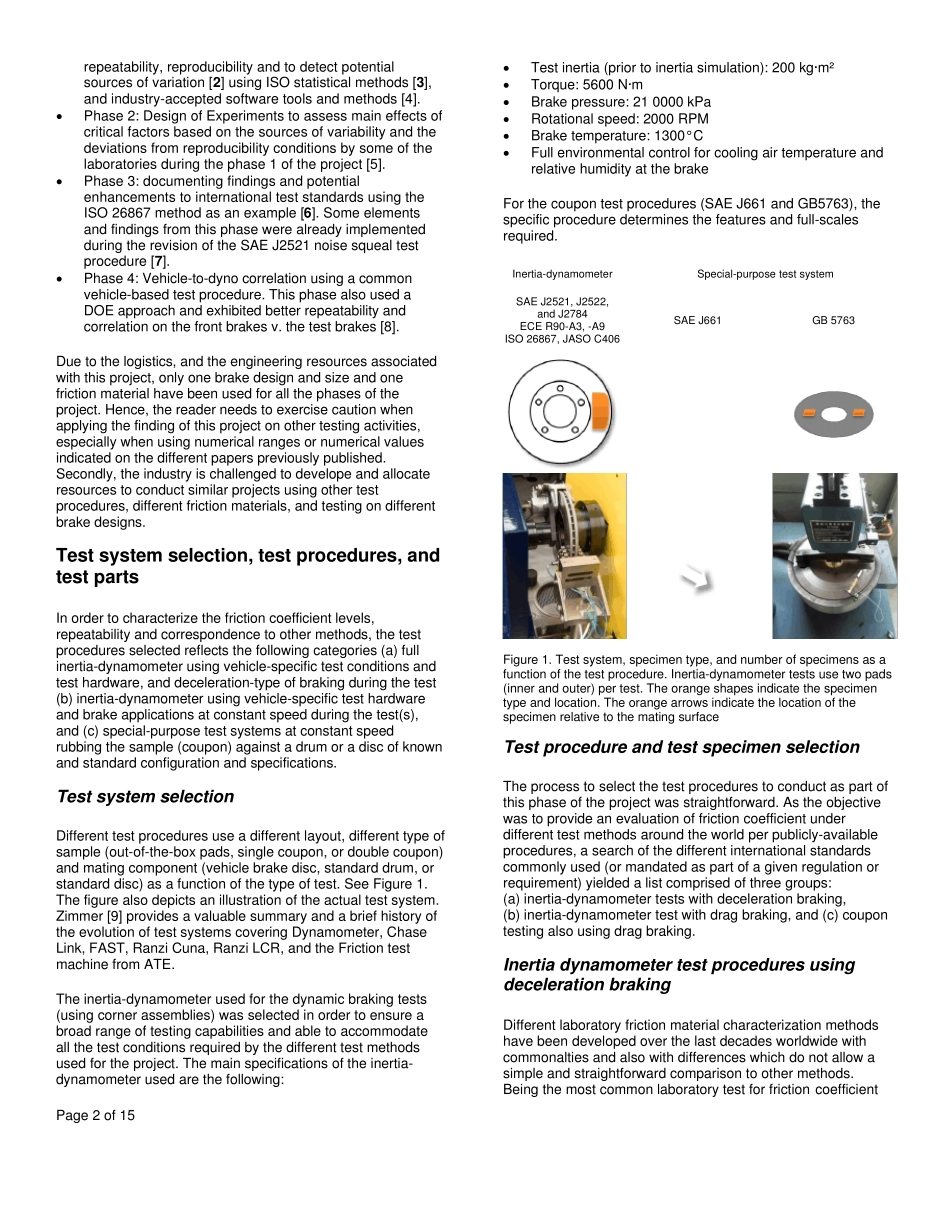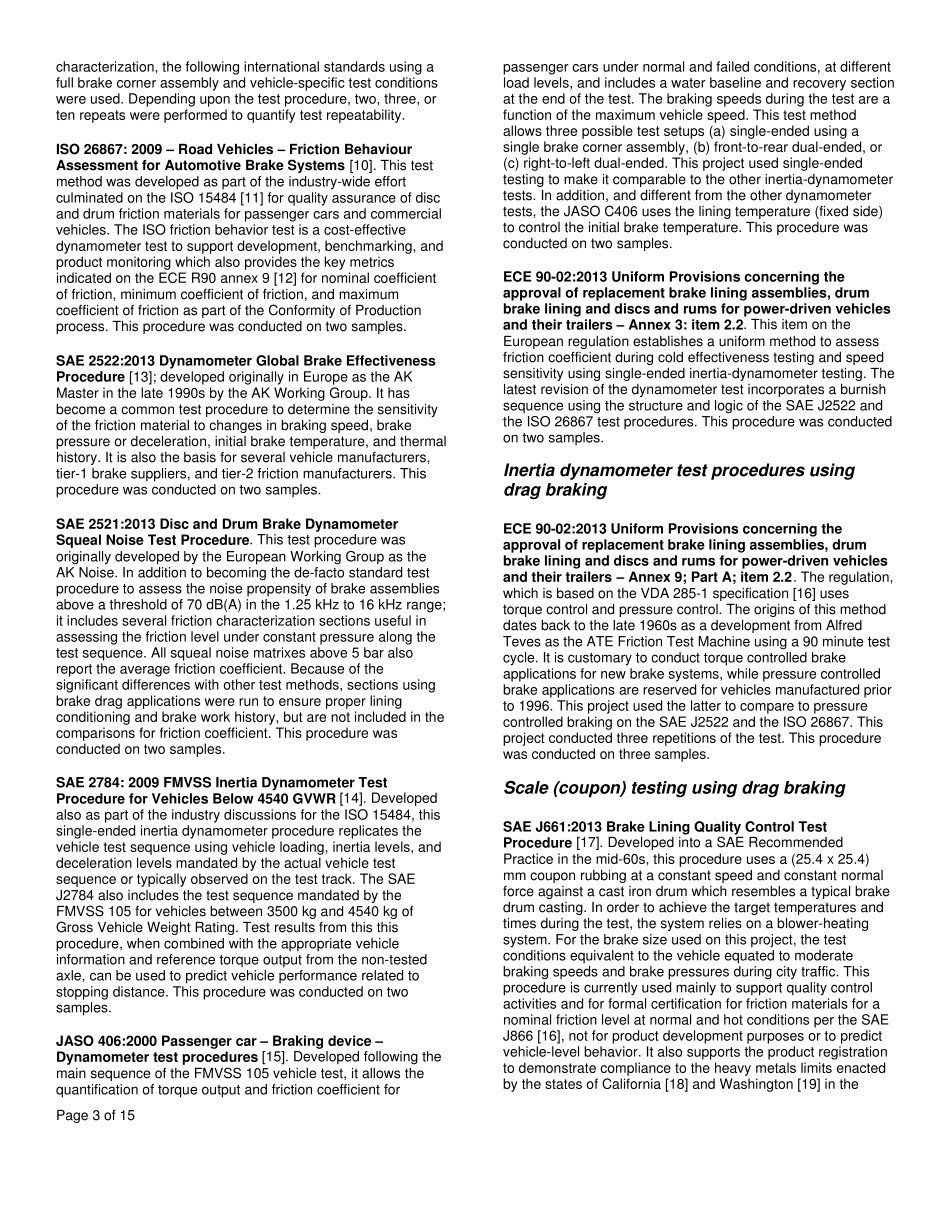Page 1 of 15 2014-01-2521 Influence of Test Procedure on Friction Behavior and its Repeatability in Dynamometer Brake Performance Testing Copyright © 2014 SAE InternationalAbstract The efforts of the ISO “Test Variability Task Force” have been aimed at improving the understanding and at reducing brake dynamometer test variability during performance testing. In addition, dynamometer test results have been compared and correlated to vehicle testing. Even though there is already a vast amount of anecdotal evidence confirming the fact that different procedures generate different friction coefficients on the same brake corner, the availability of supporting data to the industry has been elusive up to this point. To overcome this issue, this paper focuses on assessing friction levels, friction coefficient sensitivity, and repeatability under ECE, GB, ISO, JASO, and SAE laboratory friction evaluation tests. With multiple companies (or programs) developing and assessing the friction coefficient and friction behavior under different methods, it is inevitable to avoid conflicts of performance requirements or lack of reproducibility or correlation of test results under different test methods. In order to provide an evaluation consistent with previous phases of the Task Force activities, the same brake corner assembly and same friction material is used for this study. The study is comprised of three main steps: 1.Conducting tests under several test procedures.2.Assessing and comparing friction levels, in-stop frictionbehaviour, repeatability, as well as friction coefficientsensitivity to the test conditions, including the friction-couple thermal history.3.Presenting benefits and limitations of each procedure as-written along with a...


